If you’ve ever encountered a large, long-necked bird out in nature that hissed, fanned its wings and even charged, then you’ll likely be familiar with geese.
Our long-feathered friends are often not very friendly in temperament.
They are very territorial, especially during their nesting season, and will use every defense tactic possible to defend their space. Sometimes it comes in the form of hissing, charging, or fanning their wings. They also occasionally open their beaks wide, and try to bite.
If you’ve experienced this before, you may have caught sight of what appear to be ‘geese teeth‘ inside their beak. Or perhaps, you were too busy running and screaming to notice.
But do geese really have teeth? And, wait, what are those barbed accessories on their tongue?
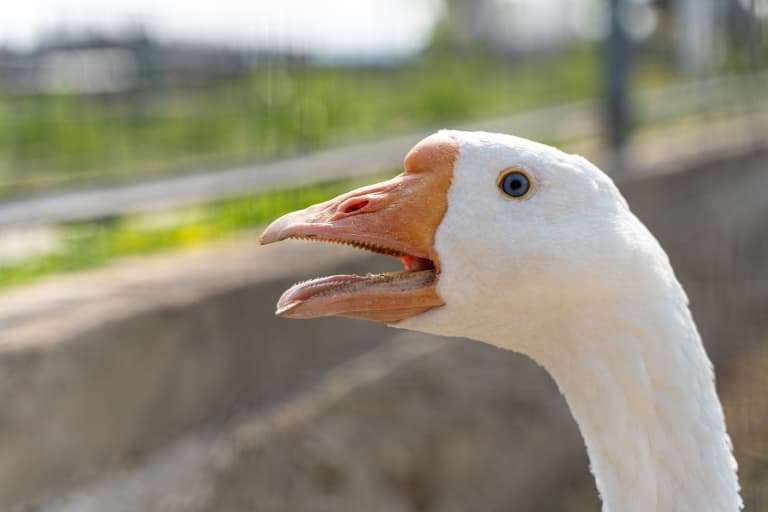
What Qualifies as Teeth?
Teeth are generally seen as a structure present in humans and animals that are made from enamel to help break down food to digest. The structural make-up, how many are present, and the way they are shaped all differ depending on the animal and their diet.
Some animals eat solely plants to get energy. These animals are classified as herbivores, and are only able to digest plants. A few examples of these would include cows, sheep, and rabbits.
Geese are considered “obligate herbivores” by some, as their bodies are made to digest plants, but they occasionally eat small portions of meat.
Because their intake of plants outweighs their meat consumption, and their bodies were made more so to eat plants, they cannot completely be considered omnivores, whose diet is mixed between meat and plants. So they don’t really ‘need’ proper teeth based upon their diet.
Do Geese Have Teeth?
Short answer: no. Geese do not have teeth by technical definition. There are not any birds that have teeth, although many have their own unique variants.
They do, however, have something in that bill to help them break up their food and bite those who threaten their territory. These are called tomia. 1
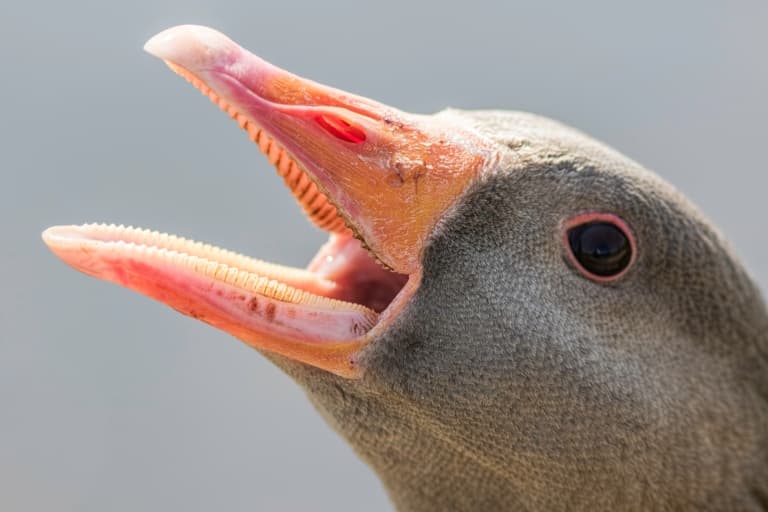
Tomia is made up of cartilage rather than enamel, and is found on the inside of a goose’s beak.
They are angled and sharp, and actually kind of flexible, given they are made up of cartilage. While it does act kind of like teeth do, helping to hold food, tomia is not considered to be teeth. 2
This, however, is only in their beaks. There is more, if you look closer at their tongue!
Wait… Do Geese Have Teeth On Their Tongues?
If you have ever seen a goose’s mouth up close, you have probably seen their terrifying looking tongues – but there is no need to be alarmed!
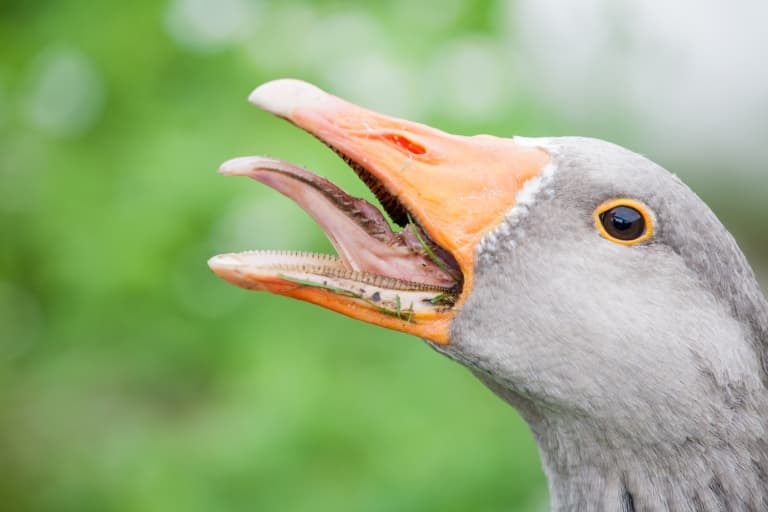
These little pointy spines, called conical papillae, are used to help the tomia in their beaks in slicing up their food for swallowing, and are not quite as sharp and threatening as they seem.
They are intended to be used solely to grip plants so that they can rip them up to eat, and to push the food to the back of their throats to swallow.
Another interesting not-tooth structure in the mouth of a goose is the lingual nail. It is found at the tip of a goose’s tongue, sharp and tough, and is used almost like a spoon.
Geese like to eat small food items like seeds and grains, and this nail at the tip of their tongue helps them to scoop them up when they are grazing.
All of these features come together to replace the teeth that other animals (and humans) have to help in the process of eating. 3
What Do They Use Their Tomia Teeth For?
As aforementioned, geese do use their tomia to bite. This is usually to eat, but sometimes to defend themselves.
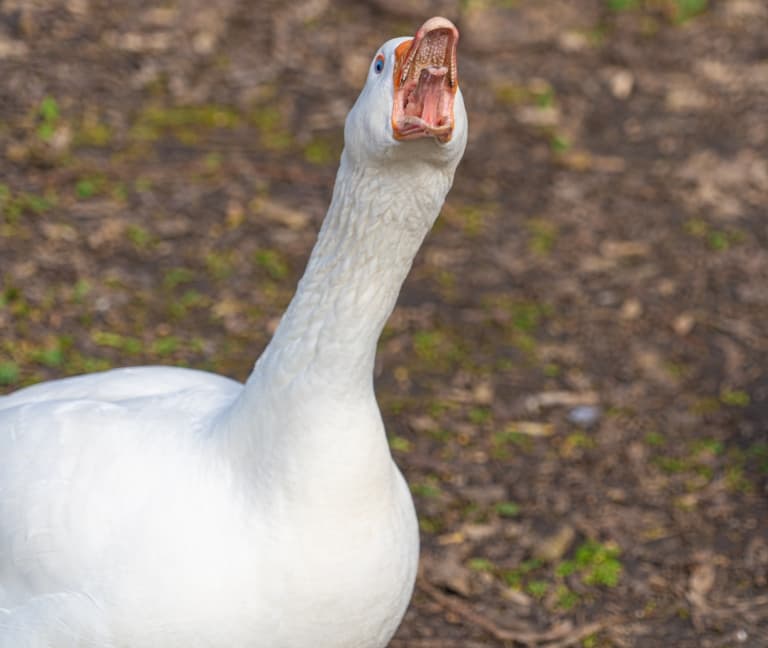
When eating, geese need their tomia to start the process of eating and breaking down the plants they intend to ingest. Because they cannot swallow whole plants, their angled tomia acts almost as a spear, ripping into their meal to help break it from the source, and cut it down into small enough pieces to swallow.
The tomia located on their tongues are actually angled in a way that pushes their food backwards towards their throat as they cut it up for swallowing. This aids in their eating process similarly to how your incisors slice food for humans like us.
Additionally, geese have what is called a gizzard, an area that further breaks down their food for digestion. Without their tomia, lingual nail, and conical papillae in their beaks and tongues, their plant meals would not be small enough to swallow to move to this step.
Since they do, in fact, have all those parts, when they use them to move food to their gizzard, it acts in a similar way to human molars. The gizzard has the same mechanical function in that they mush up and break down the food provided to then be small enough to push through to digest.
Have Geese Ever Had ‘Real’ Teeth?
It is believed by many scientists that at one point many birds had teeth.
There are many theories as to why they seem to have lost them, but the most common is that teeth were weighing them down in their flight.
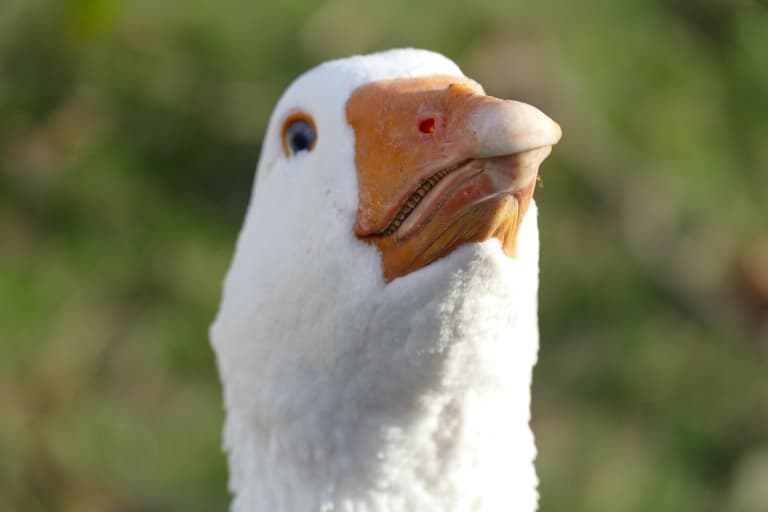
In order for them to have teeth, they had to have larger heads and spacier beaks, which would understandably make them heavier, and make it harder to fly. Being that flight is important for not just geese, but birds of all kinds, they slowly evolved to not have any real teeth.
Another theory is that teeth were elongating their incubation period, making their offspring a threat to predators looking for their next meal. As of now, geese take about 28-35 days to hatch once eggs are laid. It is believed by few that the incubation period may have been much longer when birds had teeth, as teeth take a good amount of time to form.
A longer incubation period would thus mean more time being exposed to egg-eating predators, and the unpredictable environment surrounding them outside of their shells. To combat this, birds evolved to not need teeth, and instead started developing tomia, lingual nails, and conical papillae to still have an aid in the process of eating and digestion. 4
Fact Sources & References
- Campbell, Bruce; Lack, Elizabeth, eds. (1985), “A Dictionary of Birds”, Carlton, England: T and A.D. Poyser.
- Peter R. Stettenheim (2015), “The Integumentary Morphology of Modern Birds—An Overview“, American Zoologist, Volume 40.
- Rachael Funnel (2022), “Fact Check: Do Geese Have Teeth? Here’s What “Geese Teeth” Really Are“, IFL Science.
- Dan Nosowitz (2014), “How Birds Lost Their Teeth“, Audubon.
